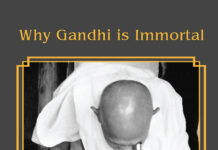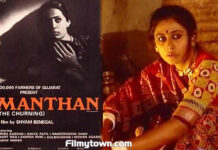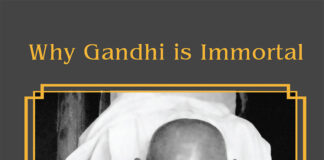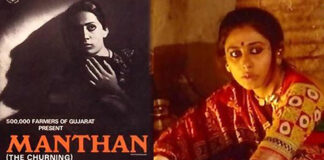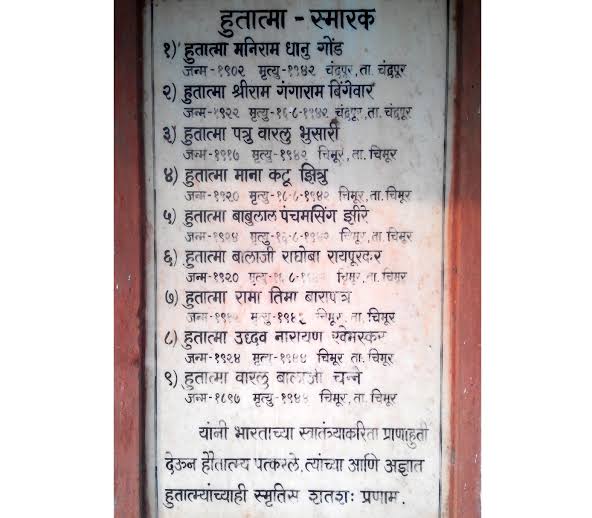
Chimur Kranti of 1942 – A Legacy that Congress has Forgotten and now the RSS Tries to Claim
There are innumerable stories of bravery emanating from the national movement. The claims to these stories are open to all. If the present day followers of the organisation which actually fought and built these stories relegate the legacy to the sidelines, then the space opens up for others to come in. In the process of appropriation the narratives are twisted. This happened with the legacies of Netaji Subhash Chandra Bose and Azad Hind Fauj and with Sardar Vallabhbhai Patel. Now there is yet another report that the RSS tried to extend claims of participation in the historic battle fought by the people of Chimur against the British Raj in 1942.
Those readers who are not aware of the Chimur Kranti must understand that this issue is extremely sensitive for the people of Chimur, Chandrapur district and the whole of Vidarbha. The Chimur battle took place on 16 August 1942, a week after the Quit India movement started on 9 August 1942. The incidents at Gowaliya Tank Maidan where Aruna Asaf Ali unfurled the tricolour and the crackdown on Congress leaders proved to be a turning point in the nationalist struggle. The entire country responded to the call for ‘Do or Die’ given by the Mahatma. Chimur Kranti was undoubtedly part of that larger nationalist struggle, specifically the Quit India movement and therefore the claims of the RSS that they had led or even participated as an organisation in the Chimur Kranti is really a figment of right-wing imagination
Today Chimur is an important sub-division of Chandrapur district. Till this day people are extremely sensitive and proud about the Chimur Kranti because of the extraordinary courage and fortitude shown ordinary men, women and children in that struggle. The people of this village rose against the mighty British Raj and suffered great pains. On 15 August 1942 Rashtrasant Tukdoji Maharaj inspired people with his deeply patriotic bhajans which exhorted people to fight for freedom and on the very next day people rallied in protest against colonial rule. There were riots and the police fired on the people in which many died and many were injured. Amongst those who laid down their lives was a twelve year old boy named Balaji Raipurkar. According to the note circulated to newspaper offices the Sangh Parivar claims leadership role by saying that Rashtrasant Tukdoji Maharaj was close to various Hindu organisations and Balaji Raipurkar used to attend RSS Shakhas. Fact remains that there is no evidence of Balaji Raipurkar having attended any shakha. And even if he did, this fact alone does not put him in any leadership position as far as Chimur Kranti was concerned. He was after all merely twelve years old.
As far as Rashtrasant Tukdoji Maharaj is concerned – he remains a greatly revered reformist saint who has thousands of followers even today. There is absolutely no doubt that Rashtrasant Tukdoji Maharaj was deeply influenced by Gandhiji and spent several months with the Mahatma at Sevagram Ashram. Rashtrasant’s magnum opus Gram Geeta (1954) which provides spiritual, ethical and practical guidance for the upliftment of the village community, is influenced by the Gandhian philosophy. The book includes detailed sections on village cleanliness, village self-rule, voluntary labour, de-addiction, abolition of untouchability etc. which are all part of the Gandhian ideas of Constructive Programme. In fact one whole chapter titled Bhoo-Vaikuntha’ is dedicated to Mahatma Gandhi as follows:
Gramrajyachi ramrajya. Swavlamban hechi swarajya.
Boleele Mahatma vishvapujya. Vikas tyacha sundar ha.
“Village self-rule is the true Ram-rajya. Self-sufficiency is the true Swaraj. This is how the universally revered Mahatma described the beauty of village development.”
The Rashtrasant wrote 112 bhajans in dedicated to Gandhiji and his ideals and even published a book called Gandhi Geetanjali.
Rashtrasant may have visited some Hindu organisations but as far as Chimur Kranti is concerned he was certainly not acting on behalf of any such organisation. As a close associate and admirer, Rashtrasant Tukdoji Maharaj was one of the first to respond to the Mahatma’s call to action and inspired people to participate in the Quit India Movement which was led by the Indian National Congress.
During the Chimur Kranti people were filled with nationalist fervour and after the police opened fire the protestors attacked the police and other government officials. Four officers of the Raj died in the riots and many policemen ran away. There are descriptions available of how the people ordered government officers to remove the British uniforms and forced them to wear the Gandhi Topi and also made them to carry the Congress Flag in a procession. Now, if the RSS would have played a major role in the battle, then certainly the officials would have been forced by the people to wear the RSS black cap and carry the RSS flag!
After the incidents of 16th August, Chimur was free of British rule for three days till 19th August 1942 when 200 European soldiers landed in the village. Till 26th August they unleashed a reign of terror, looted the village, raped women and thrashed men. The British government imposed the Defence of India Rules to muzzle the press and prevent reporting. Through the consistent efforts of the Congress leader Anusayabai Kale the capital punishment was commuted to life imprisonment and there were serious petitioning for the release of the prisoners. Professor Bhansali fasted for more than 60 days in the house of Jamnalal Bajaj to demand for the lifting of restrictions on the press. Inspite of the risks involved the Congress Secret Radio relayed the incidents which were relayed also by the radio of the Azad Hind Fauj.
While there is much evidence to show that the Chimur Battle was part of the Quit India movement, it is strange that the Congress party today hardly claims this legacy beyond attending annual state functions on 16 August at Chimur. This year the Congress Party organised the Azadi Gaurav Padayatra and there were several rallies in the towns and rural areas of Chandrapur district led by party office bearers and leaders. Although many speeches were made no one spoke about the role played by the patriots of Chimur or the their participation in the Quit India movement. Naturally there was no mention of Rashtrasant Tukdoji Maharaj or Anusayabai Kale. It is not to say that Congress has forgotten its legacy but rather it is another unfortunate reminder that the Congress of today is not the Congress that led the freedom struggle.
– Paromita Goswami
1. Devendra Gawande’s strong response in Loksatta titled ‘Chimurcha Ladha – Vastav Va Mithak’ can be accessed here
2. Previous article in TVG titled ‘Countering the Azaadi as Bheek Propaganda’ can be accessed here

